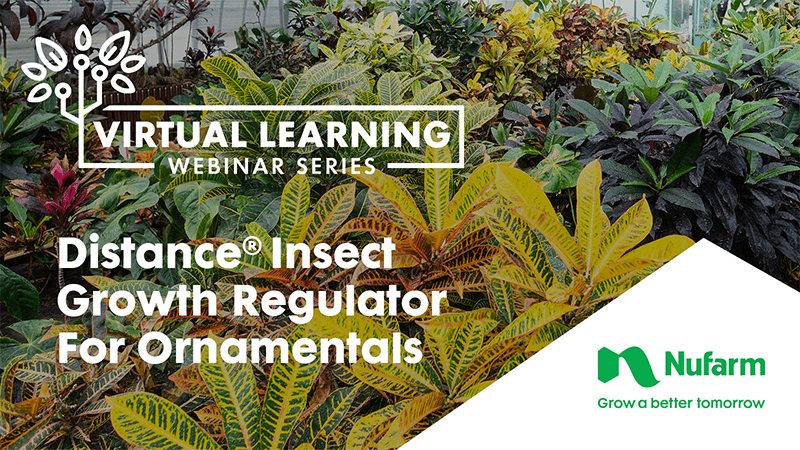Tips to Minimize Late-Stage Foliar Disease Pressure in Garden Mums
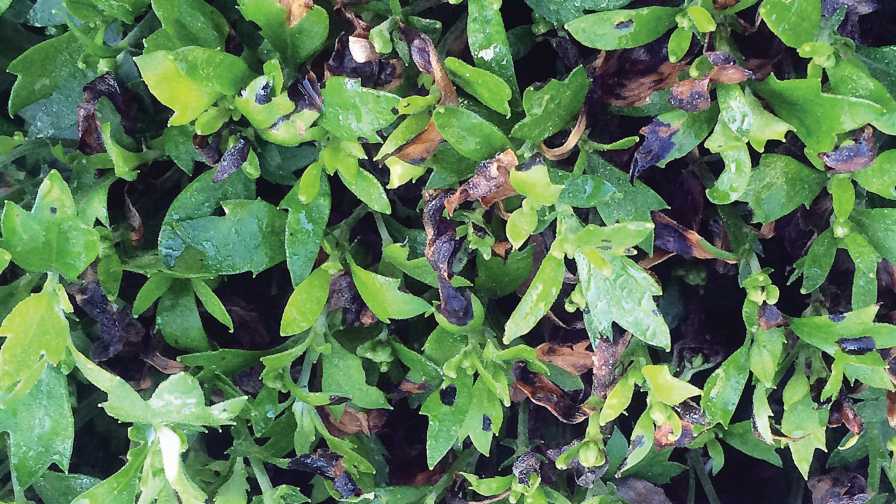
Bacterial Leaf Spot symptoms on chrysanthemum.
Photo by Rick Yates
Late summer is notorious for bringing high humidity and, sometimes, drenching rains to much of the country. All that heat and moisture can lead to increased disease pressure on garden mums. Unfortunately, this can trigger disease outbreak just in time for the beginning of the shipping season.
Two major issues that make up the bulk of the foliar disease threat in garden mums are aerial Rhizoctonia, which sometimes occurs in concert with Botrytis, and a bacterial leaf spot caused by Pseudomonas.
Here’s What To Look For
Aerial Rhizoctonia is a fungal disease favored by wet foliage and high humidity. Sometimes this disease manifests itself as light-brown lesions scattered across the outside canopy of the garden mum. As the crop progresses to the later stages, well-grown garden mums with a thick, tight canopy of foliage will sometimes develop aerial Rhizoctonia down in the plant. The mum looks great from the outside but, using your hands to gently separate the foliage, you may see the wet rot going on down inside the plant canopy.
Pseudomonas cichorii is a bacterial disease that is readily spread throughout a garden mum crop by splashing water. If you are currently using overhead sprinkler irrigation to water your mum crop, this is a good reason to consider making the switch to drip or trickle irrigation.
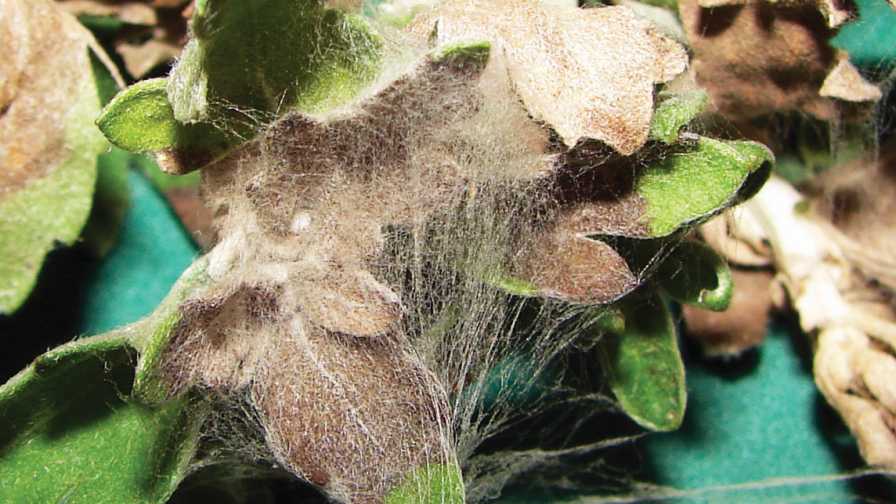
Rhizoctonia web blight disease on chrysanthemum.
Photo by Rick Yates
Prevention Tips to Maintain Quality Crops
Growers can take steps to minimize the risk of losing quality or even experiencing shrinkage as the garden mum crop approaches the finish line.
First, pushback against these foliar diseases can come in the form of cultural considerations. For crops that are beginning to crack color and are close to sale, reduce fertilizer from 200 ppm to 100 ppm when using a constant liquid feed. Less fertilizer is required at this crop stage and reducing the amount of nitrogen in the tissue can help reduce foliar disease risk. We recommend you don’t go to clear water, however, as nutrient deficiencies can quickly arise and reduce plant quality.
For growers who are beginning to ship their mum crop, as space becomes available, improve air movement through the field by pulling the plants apart. Overhead sprinkler irrigation results in consistent foliage wetting and increased foliar disease risk. Here’s another reason to investigate a transition to drip or trickle irrigation.
When cultural fine-tuning isn’t enough, preventative fungicides may be enlisted. Effective fungicide options for aerial Rhizoctonia appear in Table 1. We only recommend fungicides that control both Rhizoctonia and Botrytis because, as mentioned previously, they often occur together.
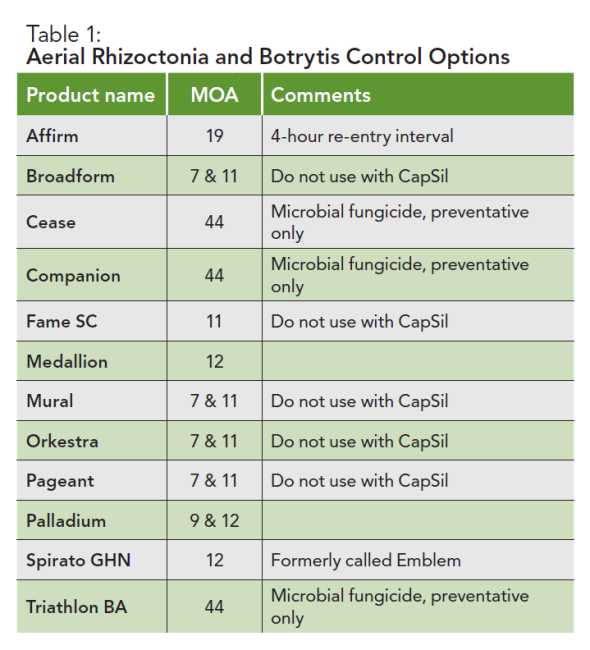
Growers have observed variety-based differences in Pseudomonas susceptibility. With the abundance of quality garden mum genetics available, consider replacing disease-prone varieties in your program to reduce the risk. Since most traditional fungicides don’t provide control of bacterial diseases, the list of effective products to choose from is relatively small. Table 2 includes the products we feel are most effective for Pseudomonas bacterial infection on garden mums.
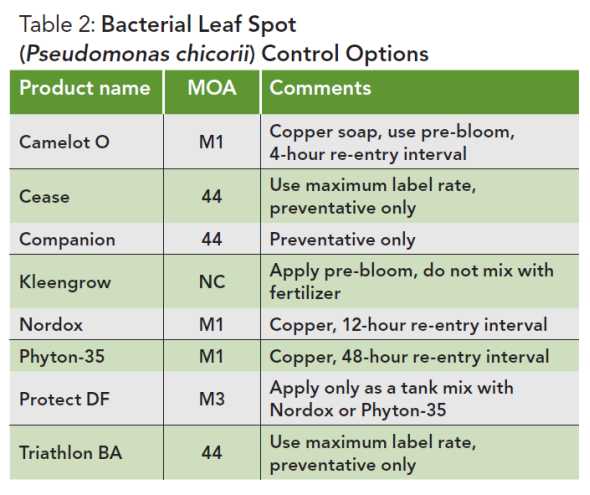
The products mentioned are all intended to be applied as a foliar application and are considered bloom-safe unless otherwise noted. The provided tables are intended as a summary; it is up to growers to read and follow the entire pesticide label. Products other than those mentioned may also be safe, legal, and effective. Some of these products may not be registered in certain states. Contact your supplier for further guidance.






